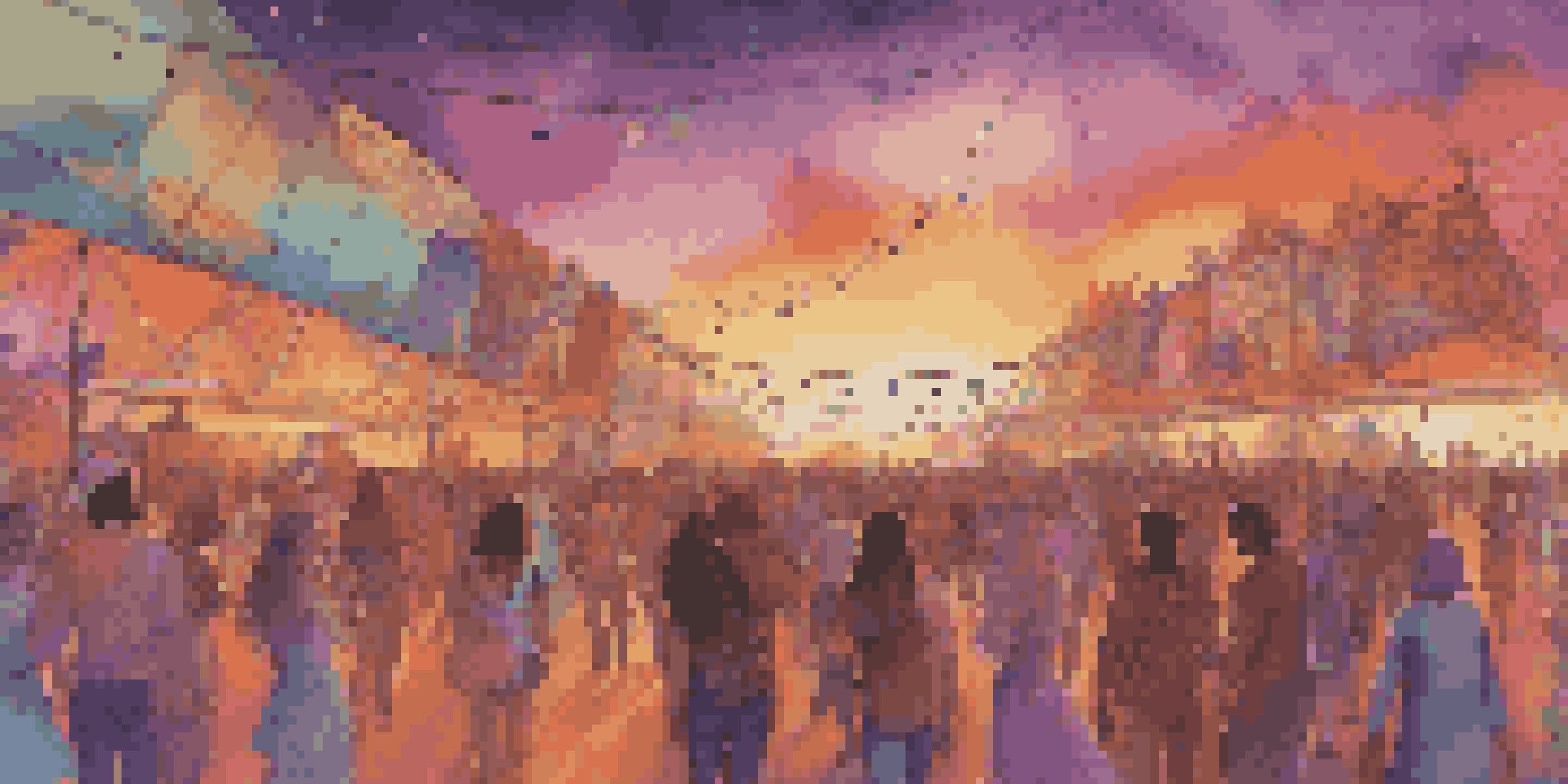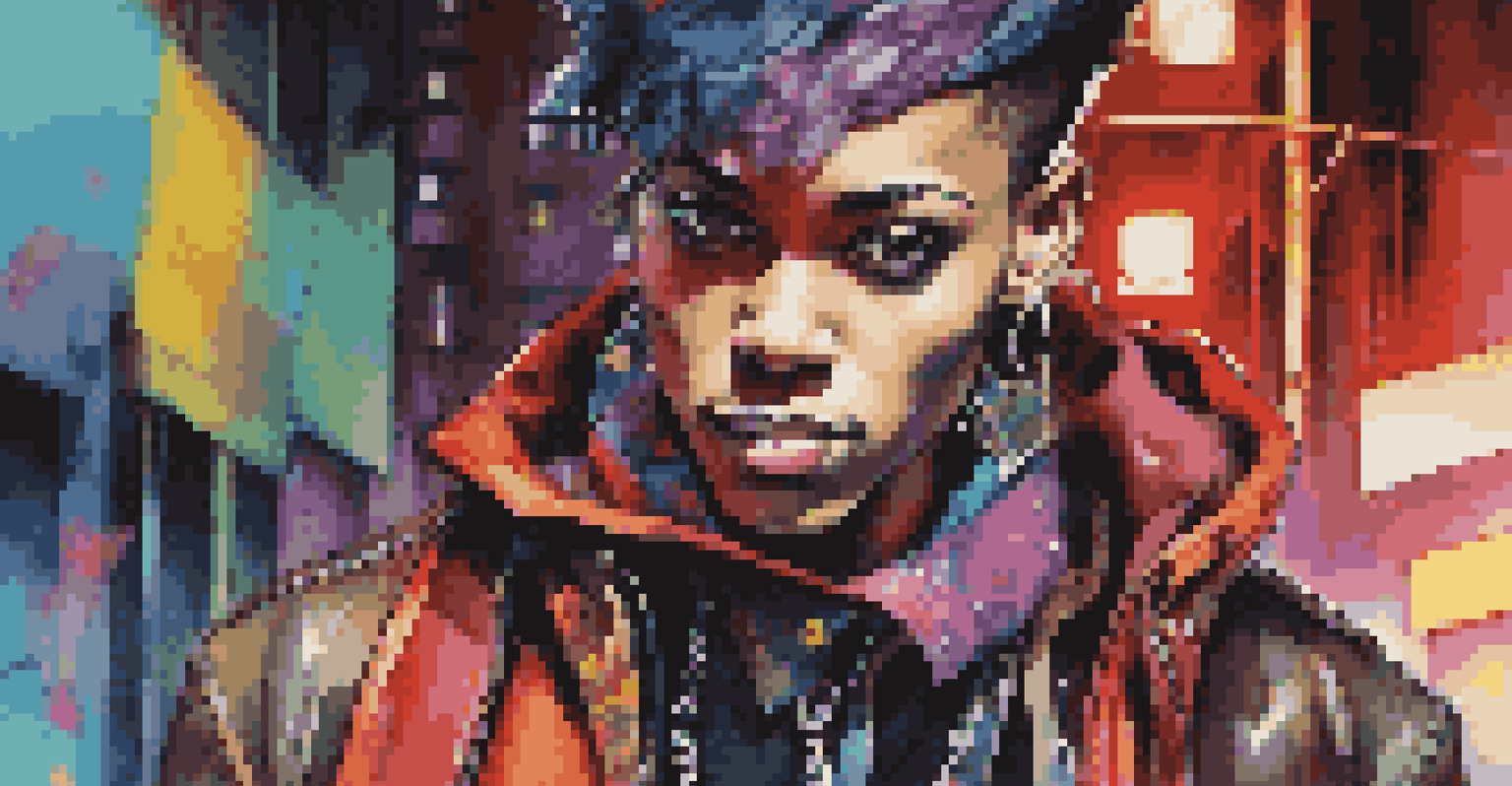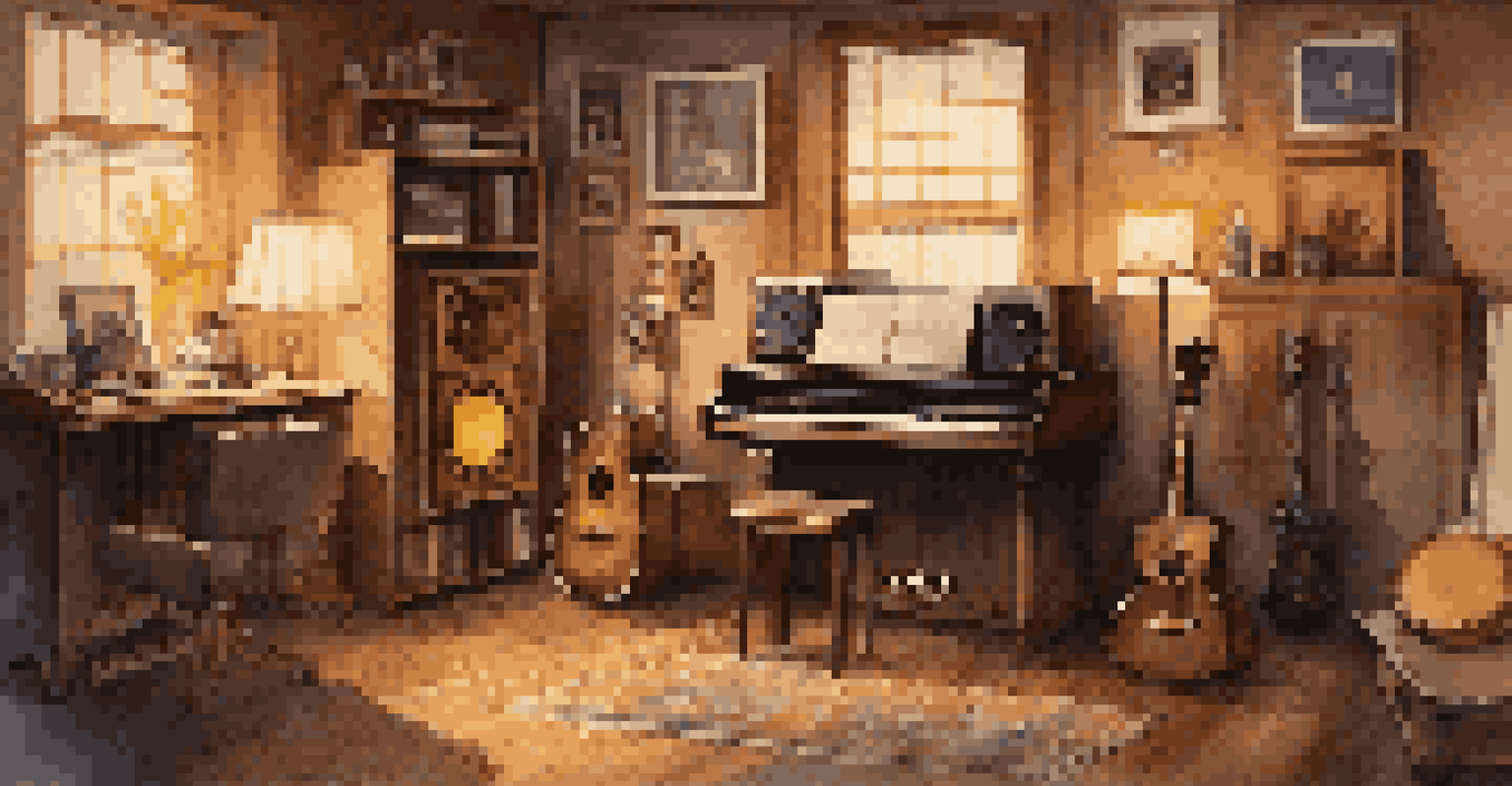The Influence of Music on Fashion and Lifestyle Trends

The Historical Connection Between Music and Fashion
Throughout history, music and fashion have danced hand-in-hand, often reflecting the cultural zeitgeist. From the flapper dresses of the 1920s, inspired by jazz, to the bell bottoms of the 1970s influenced by rock and disco, each era's sound has left a mark on clothing styles. This symbiotic relationship highlights how musicians often serve as style icons, shaping trends that resonate with their fans.
Fashion is the armor to survive the reality of everyday life.
Take, for instance, the punk rock movement of the late 1970s. Bands like the Sex Pistols and The Clash didn't just revolutionize music; they also introduced a fashion aesthetic characterized by leather jackets, ripped jeans, and bold hairstyles. This look became synonymous with rebellion and youth culture, demonstrating how music can forge identity through style.
Today, artists like Billie Eilish and Lil Nas X continue this legacy, pushing boundaries not only in sound but also in fashion. Their unique styles influence how fans express themselves, showing that the connection between music and fashion remains as vibrant as ever.
Music Genres and Their Fashion Statements
Different music genres often cultivate distinct fashion statements that fans adopt as part of their identity. For instance, hip-hop culture is closely associated with streetwear, featuring oversized clothing, sneakers, and bold logos. This style not only reflects the artists' backgrounds but also promotes a sense of community among fans.

In contrast, the indie music scene typically embraces a more eclectic style, with vintage clothing and DIY aesthetics. Artists like Florence Welch of Florence + The Machine exemplify this trend, showcasing a bohemian vibe that encourages fans to mix and match styles uniquely. This diversity in fashion choices illustrates how various genres cater to different tastes and lifestyles.
Music Shapes Fashion Trends
Throughout history, music genres have influenced distinct fashion styles, from punk rock's rebellious look to hip-hop's streetwear aesthetic.
Moreover, electronic dance music (EDM) has birthed a festival culture where vibrant, flashy outfits reign supreme. From high-energy raves to music festivals like Coachella, clothing often embodies the exuberance and spirit of the music, fostering a lively and inclusive atmosphere.
Iconic Musicians as Fashion Trendsetters
When we think of musicians who have revolutionized fashion, names like David Bowie and Madonna often come to mind. Bowie's ever-changing persona, from Ziggy Stardust to the Thin White Duke, inspired countless fashion trends, urging fans to explore their identities through clothing. His influence continues to echo in contemporary fashion, where androgyny and bold choices are celebrated.
Music is the shorthand of emotion.
Madonna, on the other hand, popularized the '80s look with lace tops, layered necklaces, and fingerless gloves, defining an era. Her ability to blend music with fashion set the stage for future artists to leverage their style as a form of self-expression and branding, making it a vital aspect of their careers.
Today, stars like Rihanna and Harry Styles are also making waves in the fashion world, often collaborating with high-end brands or launching their own lines. Their unique styles challenge traditional gender norms and encourage fans to embrace their individuality, further solidifying the role of musicians as influential trendsetters.
The Role of Music Festivals in Fashion Trends
Music festivals have become a significant playground for fashion experimentation and trendsetting. Events like Coachella and Glastonbury not only showcase musical talent but also highlight current fashion trends. Attendees often use these platforms to express their creativity, sporting everything from bohemian chic to futuristic styles.
The rise of social media has amplified this phenomenon, with influencers and celebrities sharing their festival looks online, creating a ripple effect in fashion. This visibility allows festival-goers to draw inspiration from various styles, ultimately leading to the emergence of new trends that blend music and fashion in exciting ways.
Icons Redefine Style Norms
Musicians like David Bowie and Madonna have revolutionized fashion by using their unique styles as a form of self-expression and branding.
Furthermore, many brands have recognized this opportunity, launching festival-inspired collections to cater to the market. This intersection of music and fashion at festivals underscores the lasting impact these events have on popular culture, making them a breeding ground for future style movements.
Social Media's Amplifying Effect on Music and Fashion
In today's digital age, social media plays a pivotal role in amplifying the relationship between music and fashion. Platforms like Instagram and TikTok allow artists to showcase not only their music but also their personal style, influencing fans worldwide. This instant access to trends has transformed how fashion spreads, often originating from musicians and their followers.
For example, TikTok trends often feature specific songs paired with particular styles, prompting users to replicate these looks. This has led to a rapid evolution of fashion trends that are directly linked to the music that accompanies them, creating a dynamic interplay between sound and style.
Moreover, fashion brands are increasingly collaborating with musicians to reach younger audiences. These partnerships not only elevate the brand's visibility but also allow musicians to establish their own fashion identities, further intertwining the realms of music and style.
The Impact of Music Videos on Fashion Choices
Music videos serve as a powerful medium for showcasing fashion, often leaving a lasting impact on viewers' style choices. The visual storytelling in these videos allows artists to express their musical themes through clothing, creating iconic looks that fans aspire to replicate. From the sultry outfits in Beyoncé's videos to the avant-garde fashion in Lady Gaga's work, each video can set new trends.
For instance, Missy Elliott's groundbreaking music videos in the early 2000s combined bold fashion choices with innovative visuals, inspiring a generation of fans to embrace quirky and unique styles. This ability to fuse music with fashion has made music videos a significant influence on pop culture.
Festivals Fuel Fashion Innovation
Music festivals serve as vibrant platforms for fashion experimentation, where attendees showcase diverse styles that often set new trends.
As a result, many fans look to their favorite artists for inspiration, whether it’s adopting a complete look or incorporating specific elements into their wardrobes. This ongoing influence illustrates how powerful music videos can be in shaping fashion trends and lifestyle choices.
Fashion as a Reflection of Musical Movements
Fashion often acts as a mirror, reflecting the ethos of musical movements and the societal changes they embody. For example, the grunge movement of the early '90s, led by bands like Nirvana and Pearl Jam, was marked by thrift-store finds, flannel shirts, and combat boots. This style was not just about aesthetics; it represented a rebellion against mainstream culture and consumerism.
Similarly, the rise of hip-hop in the late '80s and '90s brought streetwear into the spotlight, emphasizing comfort and self-expression. Baggy jeans, oversized T-shirts, and branded sneakers became symbols of cultural pride and identity, shaping the fashion landscape for years to come.

Today, as genres continue to evolve, so too do the fashion statements associated with them. The blending of genres, such as pop and hip-hop, has led to a more inclusive and diverse fashion scene, where artists draw from various influences to create unique styles that resonate with their audiences.